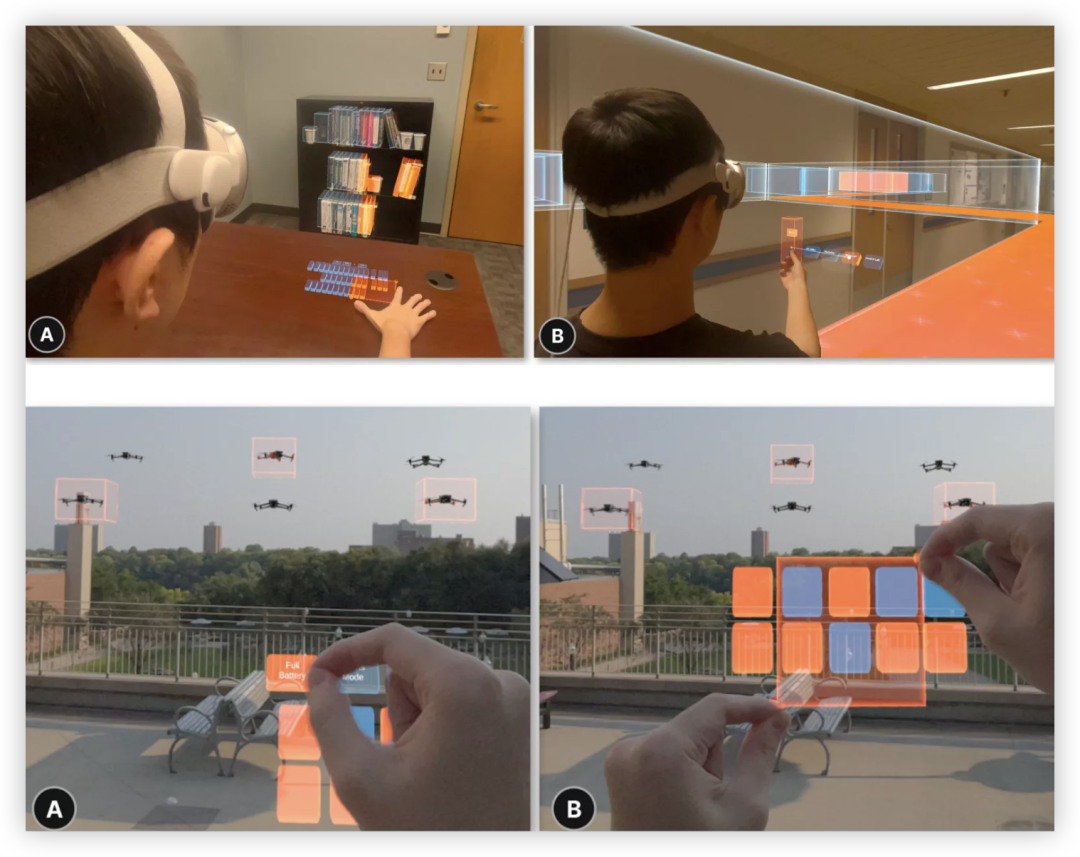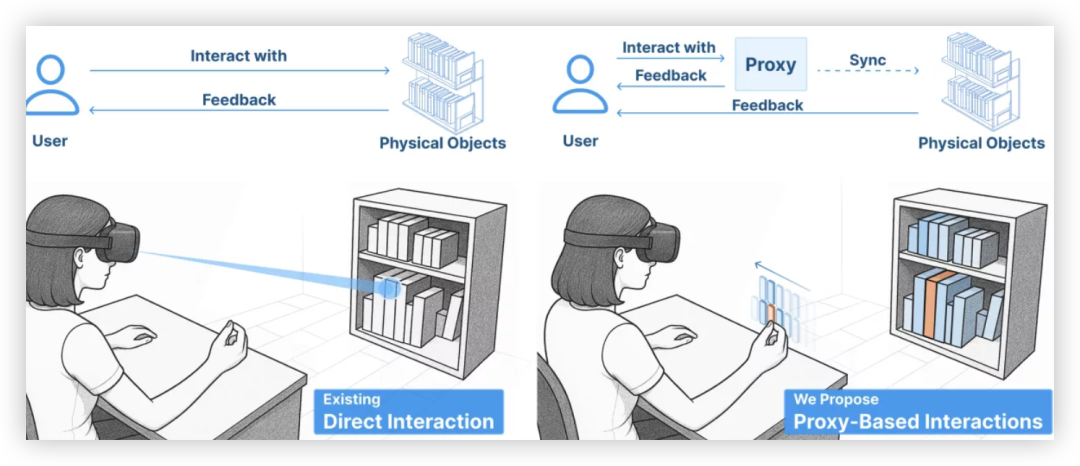Disruptive MR Interaction: Google and University of Minnesota's 'Teleportation' Black Tech, Is Your Sci-Fi Dream Coming True?

When we see protagonists in sci-fi movies lightly tapping the air to remotely control devices thousands of miles away, or casually "grabbing" distant objects, have you ever wondered when such scenes would become reality? Now, research teams from Google and the University of Minnesota seem to be turning this dream into reality step by step. They have jointly released a brand new mixed reality (MR) interaction interface - "Reality Proxy", directly addressing a major pain point in current MR technology: how to easily operate those "out-of-reach" real-world objects.
Farewell to "Looking at Objects with Sighs": The Pain and Transformation of MR Long-Distance Operation
Traditional mixed reality experiences, while able to overlay digital information on the physical world, often base their operation logic on "close-range reach." Imagine if you want to use an MR headset to control a smart light at the other end of the office, or check that book that's been gathering dust on the top shelf of the bookcase - don't you still have to walk over there? This limitation of physical distance greatly constrains the application scenarios of MR technology, especially when precise control of distant targets is needed, it becomes even more inadequate.
The University of Minnesota's co-author Mar Gonzalez-Franco once predicted that future AI assistance to human daily life would likely be achieved through XR (Extended Reality). To truly achieve this assistance, high-precision operation of real objects is undoubtedly an unavoidable key. It is precisely to solve this challenge that "Reality Proxy" was born.
"Reality Proxy": Putting the Whole World in Your "Palm Sandbox"
The core concept of this innovative technology is to use AI intelligence to recreate distant physical objects in digital space in an abstract but highly operable way. Simply put, it's like creating a miniature "reality sandbox" for you.

"Reality Proxy" uses the MR headset's camera, combined with AI's real-time analysis of captured images, supplemented by existing map information and user operation input, to almost instantly present areas or objects of interest to users as miniature models in "dollhouse scale" before their eyes. Users can easily interact naturally with physical objects far away without moving an inch. Whether it's densely stacked items, corners blocked from view, or even objects beyond the visible range of the naked eye, all can be accurately captured and operated.
Superpower Overview: Three Core Functions Unlock New Dimensions
"Reality Proxy" brings multiple intuitive and powerful functions:
-
Multi-selection:
Just like selecting files on a computer, you can easily select multiple physical objects simultaneously for batch operations. -
Semantic Grouping:
AI will intelligently categorize objects based on their properties or uses, such as "all lighting fixtures," "all drones," allowing you to manage and control based on "meaning" rather than "location." -
Spatial Zooming:
Easily zoom in on a specific spatial area, even the tiniest details can be seen at a glance for precise operations.
All these operations can be easily completed through intuitive gestures, greatly lowering the barrier to use.
Application Scenarios with Boundless Imagination: Infinite Possibilities from Home to Industry
Imagine you're lazily sitting on the sofa and want to browse a book on the high shelf? No need to get up, just "grab" its digital copy in MR, and you can immediately view the content before your eyes.
Or, if you're a drone operator facing dozens or hundreds of drones, previously requiring individual control, now you just need to lightly swipe in "Reality Proxy" to issue commands to the entire cluster.
Even before entering an unfamiliar building, you can first view the internal path through a mini model, plan the optimal route in advance, greatly improving spatial awareness and navigation efficiency. This technology can not only enhance the convenience of home life, but also has disruptive potential in professional fields such as industrial control, emergency response, and remote collaboration.
Conclusion: The Future Has Arrived, Is MR's "Singularity" Just Around the Corner?
The emergence of "Reality Proxy" undoubtedly paints a grander, more practical future for mixed reality technology. It's not just solving an interaction challenge, but opening a door to "remote control reality." This research result is expected to be officially released at the "ACM UIST Conference" to be held in South Korea at the end of September, where we might see more details and demonstrations of this "teleportation" black tech.
We can't help but imagine, when the boundary between virtual and reality further blurs, when our thoughts can truly reach afar, how wonderful will the future world be? "Reality Proxy" might just be a beginning, but it's undoubtedly a key step for MR toward popularization and truly changing our way of life.
分享文章
3篇相关文章
ByteDance Enters MR: Pico’s Secret Device Challenges Meta’s Dominance
2025-07-15
ByteDance’s Pico is developing a lightweight mixed reality headset to challenge Meta’s dominance. This innovative device could redefine our vision of future interaction.
Godot And Khronos: Major OpenXR Update For XR Development
2025-11-11
Godot teams up with the Khronos Group to advance OpenXR; multiple core features reach production readiness, enabling a more unified and efficient cross‑platform XR workflow.
Vision Pro Too Expensive? Samsung Galaxy XR Targets Mass MR
2025-11-11
With a friendlier price and practical features, Samsung’s Galaxy XR challenges Apple’s Vision Pro and offers consumers a new path into mixed reality.